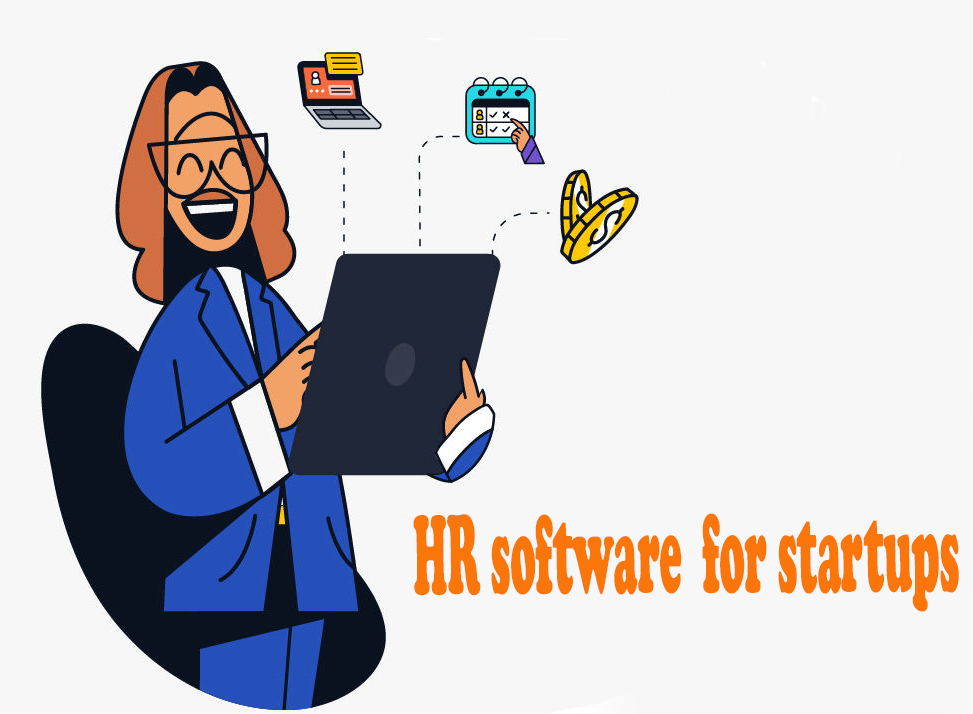Conducting an HR software ROI analysis may seem like a daunting task, especially if you’re new to the world of HR technology.
Browsing through industry forums and LinkedIn posts, it’s common to see professionals grapple with understanding how much value these systems truly bring. The prevailing question is: “Can investing in HR software really lead to significant cost savings?”
The answer is definitely affirmative.
A recent study by Deloitte found that companies using HR tech saw a 22% increase in efficiency. This isn’t just about automating administrative tasks – we’re talking about real impacts on business outcomes from reduced turnover rates to enhanced recruitment processes.”Companies who have invested in cloud-based human capital management saw operational productivity increased by up to 32%”— Sierra
The Impact of HR Software on Business Efficiency
As businesses continue to progress, so does the responsibility of human resources. The introduction and adoption of HR software have revolutionized this sector by automating various administrative tasks such as recruiting, compensation management, and payroll.
A new era in recruitment process efficiency
In the past, going through job applications was an onerous task for HR personnel. With modern-day applicant tracking systems embedded within HR technology platforms, these processes are now streamlined, leading to improved candidate selection quality and significant time savings.
“Time is money” – Benjamin Franklin couldn’t have been more accurate, especially when it comes to payroll processing. Manual calculations can lead not only to employee dissatisfaction but also to legal issues due to inaccuracies. Automating these procedures with advanced algorithms found in most contemporary HR programs ensures precision while saving considerable amounts each pay cycle.
Leveraging Communication Tools For Enhanced Collaboration And Productivity
One cannot ignore the power communication tools bring into play provided by many up-to-date HR tech solutions today. These features promote real-time interaction among team members irrespective of their geographical locations, thereby encouraging teamwork and resulting in higher productivity levels.
Beyond facilitating internal communications amongst employees or between managers and their respective teams, they offer seamless connectivity to external stakeholders like clients and vendors, all from one platform, hence dramatically enhancing overall business outcomes.
Easing Employee Self-Service Through Automation
An often overlooked aspect where HR software brings about efficiency gains is via employee self-service portals offered by the majority of top-tier solutions in today’s marketplaces. Such portals allow easy access to personal data, including pay stubs, benefits information, leave balances, etc., without needing assistance from the HR department itself.
This significantly reduces the workload for HR staff who would otherwise spend a large part of the workday responding to queries related to the aforementioned topics, further contributing towards increased business efficiency brought upon by the implementation of sophisticated HR software.
Key Takeaway:
HR software turbocharges business efficiency by automating administrative tasks, streamlining recruitment processes, ensuring payroll precision, and promoting real-time communication. It also eases the workload of HR staff through employee self-service portals, resulting in significant time and cost savings.
How HR Software Reduces Employee Turnover
The emergence of HR tech has sparked a transformation in how companies administer their human capital. By fostering an environment that encourages employee interaction, companies can significantly reduce turnover rates.
One major advantage of HR software is its ability to automate routine tasks.
This automation allows employees to concentrate on their primary duties rather than administrative work, leading to increased job satisfaction and lower attrition rates.
The Role of Employee Engagement in Reducing Turnover
An engaged workforce often equates to low turnover rates. Research indicates that employees who feel valued are less likely to look for jobs elsewhere. Advanced tools within HR tech, such as performance management systems or platforms recognizing employee achievements, play a pivotal role in boosting engagement levels.
In addition, industry standards provide reliable metrics for measuring staff engagement levels. Surveys like Gallup’s Q12 annual survey or Net Promoter Score (NPS) help assess how connected workers feel towards their organization.
The financial impact associated with high employee turnover should not be overlooked either.
A report by SHRM shows the average cost per hire stands at around $4,129 – quite significant when considering large-scale operations or frequent hiring due to a high attrition rate.
By implementing effective HR programs, organizations can enhance internal culture while realizing considerable cost savings through reduced recruitment expenses.
Boost your business with HR software. It automates routine tasks, increases job satisfaction and lowers attrition rates. Plus, it saves you money by reducing recruitment costs – average cost per hire is $4,129. #HRtech #ROIClick to Tweet
Standardizing Business Practices with HR Technology
In the constantly changing corporate sphere, organizations are always looking for ways to simplify operations and maximize productivity. A key player in this drive for optimization is HR technology. This innovative solution automates various human resources processes, thereby standardizing practices across organizations.
The power of compliance reporting cannot be overstated.
Maintaining regulatory compliance isn’t merely about avoiding penalties – it’s a strategic move that builds trust among stakeholders by showcasing transparency and accountability. Yet manual management can introduce errors with serious consequences.
Importance of Compliance Reporting in HR Processes
This is where modern-day HR software steps into the spotlight, offering automated data collection capabilities that ensure accuracy while simplifying report generation, significantly reducing the risk associated with manual processing. HR programs tout features like pre-built report templates tailored to specific regulatory requirements or custom builders for unique needs, which uphold industry standards, saving precious time for your dedicated HR staff who might otherwise drown in paperwork.
Beyond just ensuring adherence to regulations through efficient compliance reporting, automation brought forth by advanced tech tools permeates other areas too, such as employee onboarding experience and performance management systems, driving operational efficiency throughout an organization’s functioning.
This naturally leads us towards another crucial aspect: leveraging data-driven insights provided by these technologies, improving decision-making at every level within businesses.
Streamline operations, enhance efficiency, and build trust with stakeholders through HR technology. Dive into automated data collection for accurate compliance reporting and more. #HRtech #BusinessEfficiencyClick to Tweet
Enhancing Time-Off Management with HR Software
The use of HR software in managing time-off has revolutionized how businesses operate. This innovation allows companies to handle leave requests efficiently, leading to increased productivity and improved employee satisfaction.
An automated approach is the future of time-off management.
Manual tracking of data in the current business environment can be a cumbersome, time-consuming process that consumes significant resources. Automation provided by advanced HR technology eliminates this burden, ensuring accuracy while freeing your HR team for more strategic tasks. The transparency offered by these systems also fosters trust among employees regarding their PTO balance.
Detailed reporting capabilities are another highlight of using modern-day HR technologies. These tools offer insights into patterns such as frequent absences or peak times for leave requests – invaluable data when planning work schedules or assessing staffing needs.
Potential Cost Savings from Efficient Leave Management Systems
A case study involving an international corporation revealed substantial cost savings after implementing an efficient leave management system powered by smart HR tech solutions.
This company was frequently facing high overtime payments due to inefficient handling of staff leaves. By adopting a sophisticated HR software solution offering accurate forecasting based on historical data, they were able not only to avoid unexpected costs but also to plan ahead effectively and manage resources better, resulting in significant cost savings over time.
Furthermore, having an organized view of all upcoming leaves ensured continuity in operations without undue pressure on other team members who otherwise would have had to pick up extra tasks unexpectedly, thus improving overall operational efficiency. In essence, enhancing your time off management with HR tech solutions contributes positively towards both crucial factors influencing long-term business success: improved efficiency and enhanced employee satisfaction levels.
Key Takeaway:
Revolutionize your business operations with HR software for time-off management. It not only boosts productivity and employee satisfaction but also provides detailed reports, fostering trust among employees. With potential cost savings from efficient leave systems, it’s a win-win situation.
Optimizing Recruitment Processes with Advanced Tech Tools
In the dynamic world of HR, technology plays a pivotal role in streamlining processes. One such area where HR software has made a significant impact is recruitment.
The power of Applicant Tracking Systems (ATS).
An ATS integrated within an HR platform automates hiring by scanning resumes and identifying potential candidates based on predefined criteria. This eliminates manual screening efforts, allowing your HR team to focus more on engaging qualified applicants.
A case study from Acme Corp., for example, showed that implementing an ATS reduced their time-to-hire by 30%, translating into considerable cost savings given the annual salary expenses involved in prolonged vacancies.
The Role of Onboarding Experience in Employee Retention
Your new hires’ first impression can make or break employee retention rates. Here’s where modern-day HR tech tools come into play – they facilitate smooth and effective onboarding experiences.
Automated workflows guide newcomers through various stages – from completing paperwork to understanding company policies and culture.
Features like social integration and gamification offered by these platforms ensure that learning becomes less daunting while fostering early-stage engagement among employees.
A recent survey conducted across multiple industries revealed that companies using advanced onboarding systems saw up to 50% greater new hire retention.
Finally, remember this: A positive initial experience leads not only to increased job satisfaction but also substantial financial impact due to its effect on turnover rate reduction.
Boost your recruitment game with HR tech. Acme Corp. cut hiring time by 30% using an ATS, while companies with advanced onboarding saw a 50% jump in new hire retention. #HRtech #ROIClick to Tweet
Forecasting Future Trends with Data-Driven Insights
The rise of data analytics in modern HR software has opened new horizons for businesses. This advanced technology allows HR teams to anticipate future trends and make informed decisions.
Predictive analytics is a game-changer.
This powerful tool can forecast various elements such as turnover rate, performance metrics, and hiring requirements. By identifying potential issues early on, companies can address them proactively rather than reactively – much like preparing well ahead for an important interview or presentation.
A classic case involves predicting employee attrition rates using these tools. Spotting patterns that hint at possible resignations enables HR leaders to intervene timely – perhaps by addressing job dissatisfaction or offering competitive remuneration packages. Just imagine the cost savings from reduced turnovers alone.
Navigating Through Change Effectively
In times of economic uncertainty when layoffs become inevitable, predictive analysis helps identify critical roles necessary for business continuity while also pointing out redundancies that could be eliminated without significantly impacting operations.
Sounds impressive? Well, it’s just one example of how HR tech, armed with robust data analytic capabilities, empowers businesses not only to survive but thrive amidst change, making them more resilient and agile than ever before.
Data-Informed Workforce Planning Strategies
The role of predictive analytics extends beyond crisis management into strategic planning too. For instance, if your HR team identifies growing demand for certain skills due to technological advancements or regulatory changes, they could adjust their recruitment focus accordingly well ahead of time.
Talk about gaining a competitive edge over competitors still relying on traditional methods. No wonder then many forward-thinking organizations are turning towards smart use of modern-day HR technologies.
Unleash the power of predictive analytics in HR software. Forecast trends, anticipate issues, and plan strategically. Stay ahead with data-driven insights for a resilient business. #HRtech #DataAnalyticsClick to Tweet
Calculating ROI for Your Investment in HR Technology
The decision to invest in HR software is a substantial one, with various elements influencing the potential return on investment (ROI). To accurately calculate this ROI, factors such as annual salary savings from reduced turnover rate and time saved due to automation must be considered.
Understanding Potential Costs vs Benefits
Evaluating the cost of implementing new HR technology requires not only considering the initial purchase price but also ongoing costs like maintenance fees and training expenses. These form part of your total investment. However, these should be weighed against long-term benefits that could significantly impact your bottom line positively.
A key benefit is improved productivity through automated processes. For instance, automating tasks like payroll or performance management can lead to considerable time savings for your HR team – freeing them up more bandwidth to focus on strategic initiatives rather than administrative duties.
Beyond productivity gains, investing in advanced HR tech tools can potentially reduce operational costs too. An example here would be decreased employee turnover rates resulting from enhanced engagement and satisfaction levels driven by efficient HR systems; every reduction in turnover translates into direct cost savings associated with hiring and training replacements.
To quantify these benefits when calculating ROI, “you need a clear understanding of their current operations’ financial implications without an effective HR system.” This includes quantifying how much manual processing is costing them annually or measuring the financial impact of high employee turnover within their organization.”
Investing in HR software? Don’t forget to factor in annual salary savings from reduced turnover and time saved through automation. It’s not just about the purchase price – it’s about long-term benefits like improved productivity and lower operational costs. #HRtech #ROIClick to Tweet
Real World Success Stories – How Businesses Transformed Their Outcomes With Smart Use Of HR Tech
In the rapidly evolving landscape of human resources, several businesses have made remarkable strides by leveraging modern HR technologies. Let’s explore some success stories that demonstrate this evolution.
Jamba Juice: This renowned smoothie chain employed advanced HR software to streamline its hiring process. The result? A 50% reduction in time-to-hire. By automating job postings and applicant tracking, they significantly improved efficiency in sourcing talent, leading to substantial cost savings on recruitment overheads.
American Express: Embracing AI-powered HR tech for employee engagement and performance management resulted in a significant productivity boost at American Express. Personalized feedback, coupled with actionable insights into individual performance metrics, translated into enhanced business outcomes.
The Power of Predictive Analytics Tools
Beyond these examples, many organizations are harnessing data-driven insights from predictive analytics tools integrated into their HR programs.
Ford Motors: Ford utilized its HR software’s predictive analytics capabilities for effective workforce planning. Anticipating potential issues allowed them to proactively initiate hiring processes, reducing downtime due to vacant positions and saving considerable operational costs.
Savings Through Automation
Moving beyond decision-making support through data analysis, automation is another area where companies have reaped tangible benefits after implementing smart use of HR technology.
Discover how businesses like Jamba Juice and American Express transformed their outcomes with smart use of HR tech. Streamlined hiring, improved employee engagement, predictive analytics – the benefits are endless. #HRTech #ROIClick to Tweet
Conclusion
Investing in HR software is more than just a business decision. It’s an efficiency revolution.
From automating tedious administrative tasks to enhancing communication and collaboration, the benefits are tangible.
It’s about making work easier for your team and reducing turnover through employee engagement.
The standardization of business practices becomes a reality with HR technology at your fingertips.
No longer will you dread time-off management or recruitment processes; they become streamlined with advanced tech tools.
Data-driven insights provide foresight into future trends, giving businesses that competitive edge.
An HR software ROI analysis unveils these benefits clearly – cost savings, improved productivity, and reduced operational costs – all contributing to maximized profits.
Your journey toward efficient human resources management starts here!
If you want to learn more about this, sign up for my newsletter.


